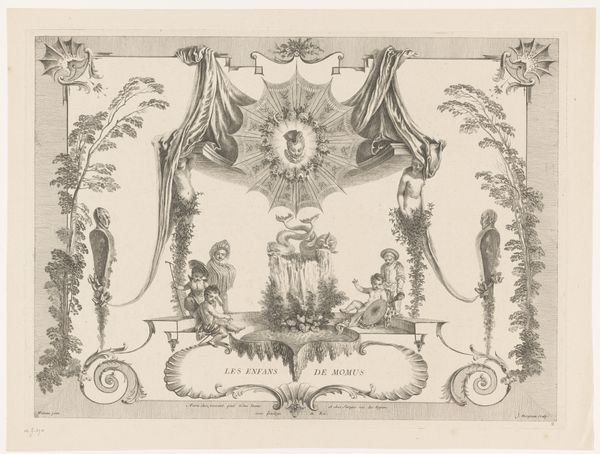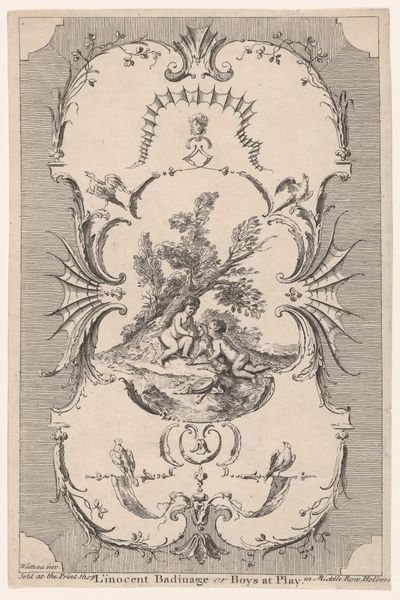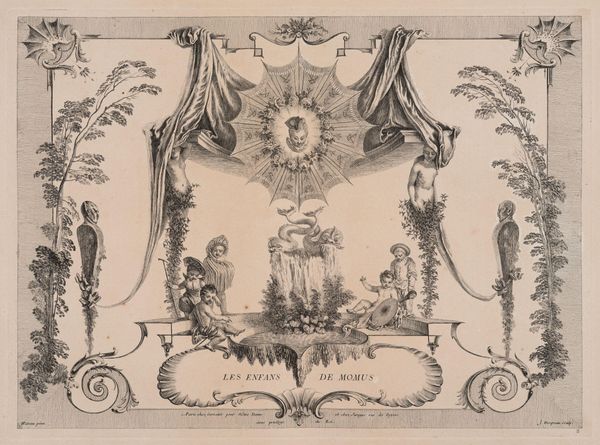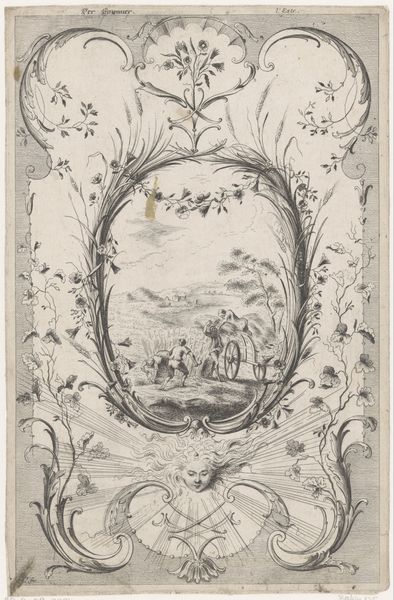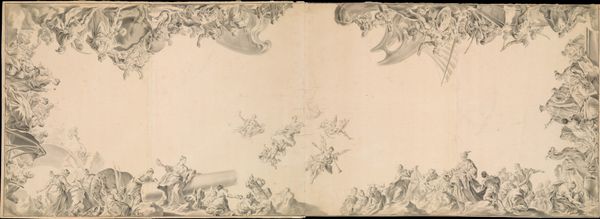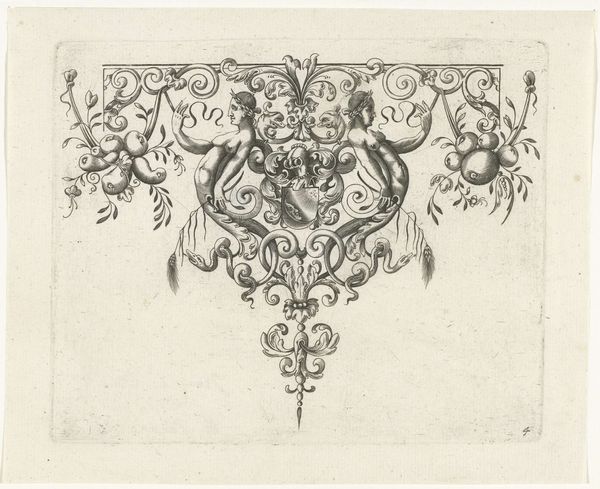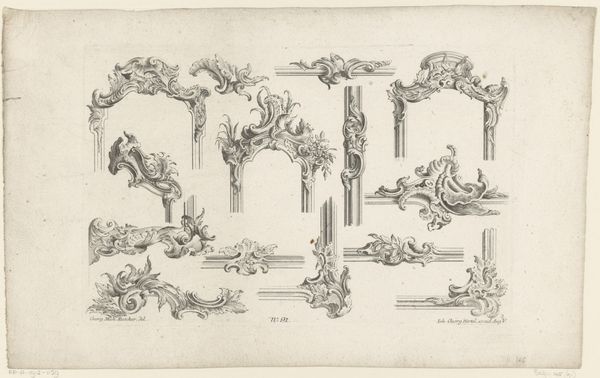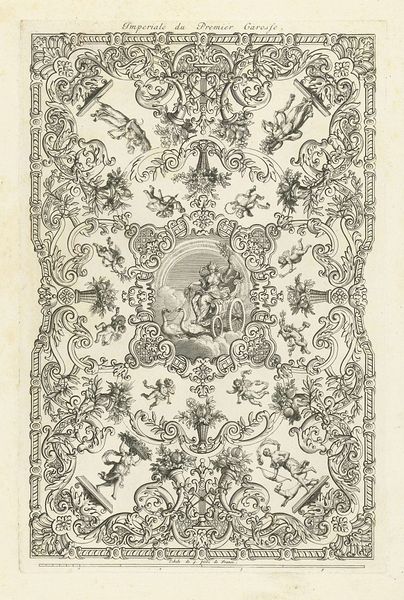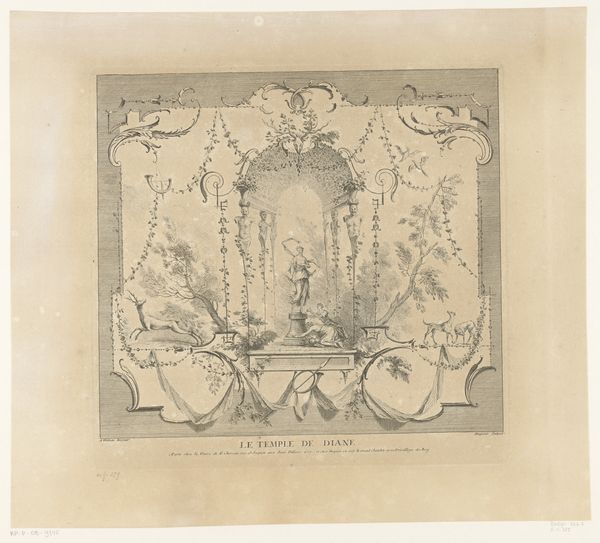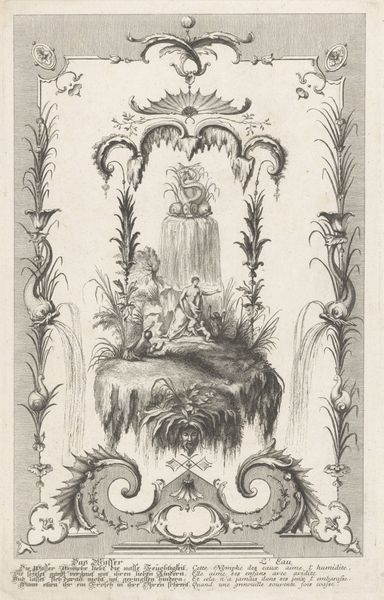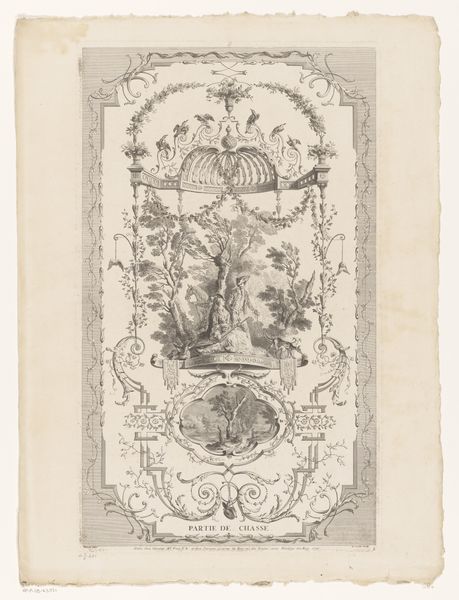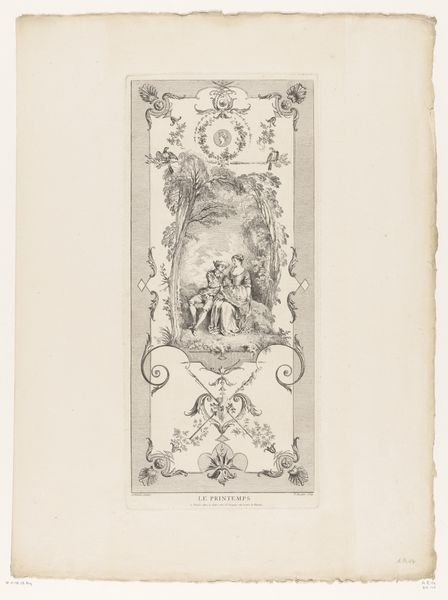![[Livre Nouveau de Douze Morceaux de Fantaisie] by Jacques de La Joue the Younger](/_next/image?url=https%3A%2F%2Fd2w8kbdekdi1gv.cloudfront.net%2FeyJidWNrZXQiOiAiYXJ0ZXJhLWltYWdlcy1idWNrZXQiLCAia2V5IjogImFydHdvcmtzLzgxMGUwODcxLTBlMjYtNGU2MC04YTIzLWQ4YTAyN2Q0ODYzNi84MTBlMDg3MS0wZTI2LTRlNjAtOGEyMy1kOGEwMjdkNDg2MzZfZnVsbC5qcGciLCAiZWRpdHMiOiB7InJlc2l6ZSI6IHsid2lkdGgiOiAxOTIwLCAiaGVpZ2h0IjogMTkyMCwgImZpdCI6ICJpbnNpZGUifX19&w=3840&q=75)
[Livre Nouveau de Douze Morceaux de Fantaisie] 1736
0:00
0:00
drawing, print, engraving
#
drawing
#
allegory
#
baroque
# print
#
book
#
history-painting
#
engraving
Dimensions: Overall: 18 7/16 x 17 3/16 x 3/16 in. (46.8 x 43.7 x 0.5 cm)
Copyright: Public Domain
Curator: This print, titled '[Livre Nouveau de Douze Morceaux de Fantaisie]', dates back to 1736 and is by Jacques de La Joue the Younger. It's an engraving, and part of a larger set of twelve fantasy pieces. The work currently resides at the Metropolitan Museum of Art. Editor: It's a dramatic piece. At first glance, the mirrored composition is almost overwhelming with all its ornamental details—the crashing waves, mythological figures. It’s as if the symmetry intensifies the chaotic feel. Curator: Symmetry was integral to baroque art. Note how Jacques de La Joue uses mirroring to convey not just balance but also a sense of theatrical grandeur. You'll see symbols like dolphins, shells, and even shipwrecks meticulously rendered. These aren't merely decorative; they evoke maritime power and, of course, the ever-present threat of the sea. Editor: Absolutely, I see how these symbols play out socio-politically! Given the rise of maritime trade at that time, there's this very charged tension in portraying both triumph and potential disaster in global enterprise. And consider the sirens, too, beckoning with deceptive beauty...are they cautionary figures in a world increasingly seduced by expansion? Curator: The sirens definitely function on several layers. On a basic level, they are classical figures. Remember too that this era looked back to antiquity for cultural legitimacy. But as powerful symbols of temptation, their presence speaks volumes about the perceived dangers of unchecked ambition. They serve as an enduring reminder of consequence. Editor: It also reminds us that women are the symbol of destructive forces, or the carriers, even if unconsciously. Interesting that male sailors fall to them, when it could very well be the decisions of ruling elite males that throw the ship off course to begin with! But those allegorical connections give it an intriguing edge in reflecting historical power dynamics. I feel like there's always a lesson on hubris woven into baroque art. Curator: Precisely! Reflecting on the human ambition within larger natural forces adds gravity to these designs beyond mere aesthetics. These elaborate ornaments convey warnings echoing across centuries about morality. Editor: Engaging with an old piece allows for contemporary self-assessment, perhaps to guard against our modern 'siren calls'. That said, it's something that I hadn’t contemplated fully before, thank you for illuminating.
Comments
No comments
Be the first to comment and join the conversation on the ultimate creative platform.
